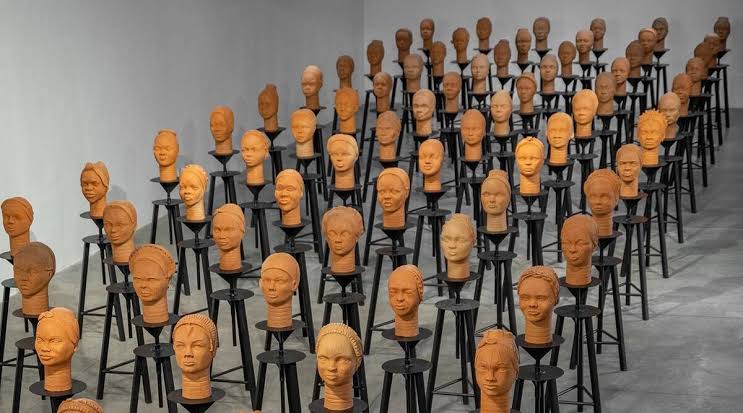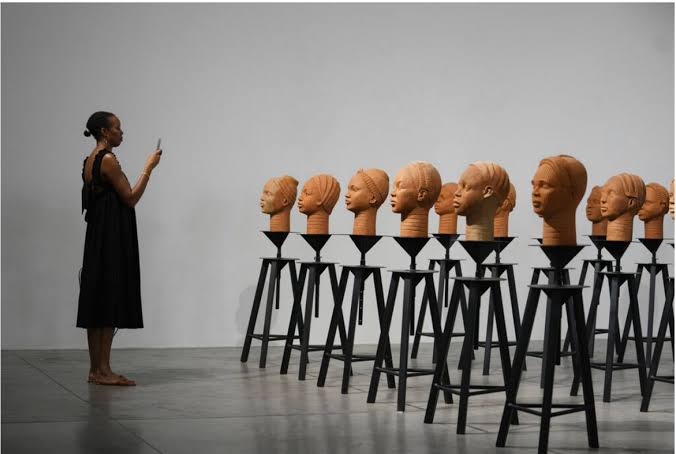In an effort to memorialize the 108 Chibok Schoolgirls who are still missing eight years after being kidnapped by Islamist terrorists, French artist Prune Nourry worked with university students, professional potters, and the relatives of the victims to create clay sculptures of the victims’ faces.
In a recent sculpture show in Lagos, the 108 Chibok schoolgirls who are still unaccounted for after their 2014 Boko Haram kidnapping in Nigeria, were remembered.

The sculptures, named “Statues Also Breathe,” which were modeled after ancient Ife clay heads from Nigeria, depict the victims’ features, attitudes, and hairstyles.
The mass kidnapping at first sparked anger across the globe, with the hashtag #BringBackOurGirls trending on social media and notable personalities including former U.S. first lady Michelle Obama calling for their rescue.
Since then, about 160 of the Chibok Schoolgirls have been freed, some after spending years in captivity, but the media has long since forgotten about the incident.
“It’s a permanent reminder that happened, we had a period in our history in Nigeria where women, boys, men, children were taken away, some were recovered, some are still displaced till today, some are still in captivity,” stated Bring Back Our Girls Lagos Coordinator, Habibat Balogun.

The French artist Prune Nourry, behind the project, collaborated with 108 students from the Obafemi Awolowo University. Families of the missing Chibok Schoolgirls also participated by lending photos of their daughters for the portraits.
“People who will see the show I hope will remember is for the importance of girls’ education then the fact that sculpture can personify someone and catch the breathing life and the symbol of someone, of life. Then it’s also about the collaboration, how together we can make more and maybe the fact that it will travel around Africa but also around the world and how we can keep bringing the light on something that might be forgotten and shouldn’t be because it will always be a priority,” explained Prune Nourry.
Nourry hopes her work will remind the world of this largely forgotten tragedy.
The sculptures exhibited at an art gallery in Lagos, Nigeria, are set to go on a world tour in the near future.
“I hope it moves beyond the four walls of this exhibition space, it moves beyond Nigeria to like globally and again it just sort of like amplifies or shows the world like the times we live in because this isn’t just Nigeria, I mean this is almost, can also be related to what is going on in Iran,” reveals Tony Agbapuonwu, art curator.
A year after the girls were kidnapped, President Muhammadu Buhari rode a wave of goodwill to power after promising to rescue them.
In early December, the nation’s national security adviser, Babagana Monguno, said the military remains committed to the cause but addes that it involves an “intelligence-driven process, which means it is going to be, unfortunately, painstaking,” though its been eight years since the kidnapping of these girls.
Many parents, however, are beginning to question the government’s commitment to the girls’ freedom.
The Chibok community continues to suffer attacks from Boko Haram and its breakaway faction which has pledged allegiance to the Islamic State group.
This year, about a dozen of the missing girls returned amid news that some have died in custody.

